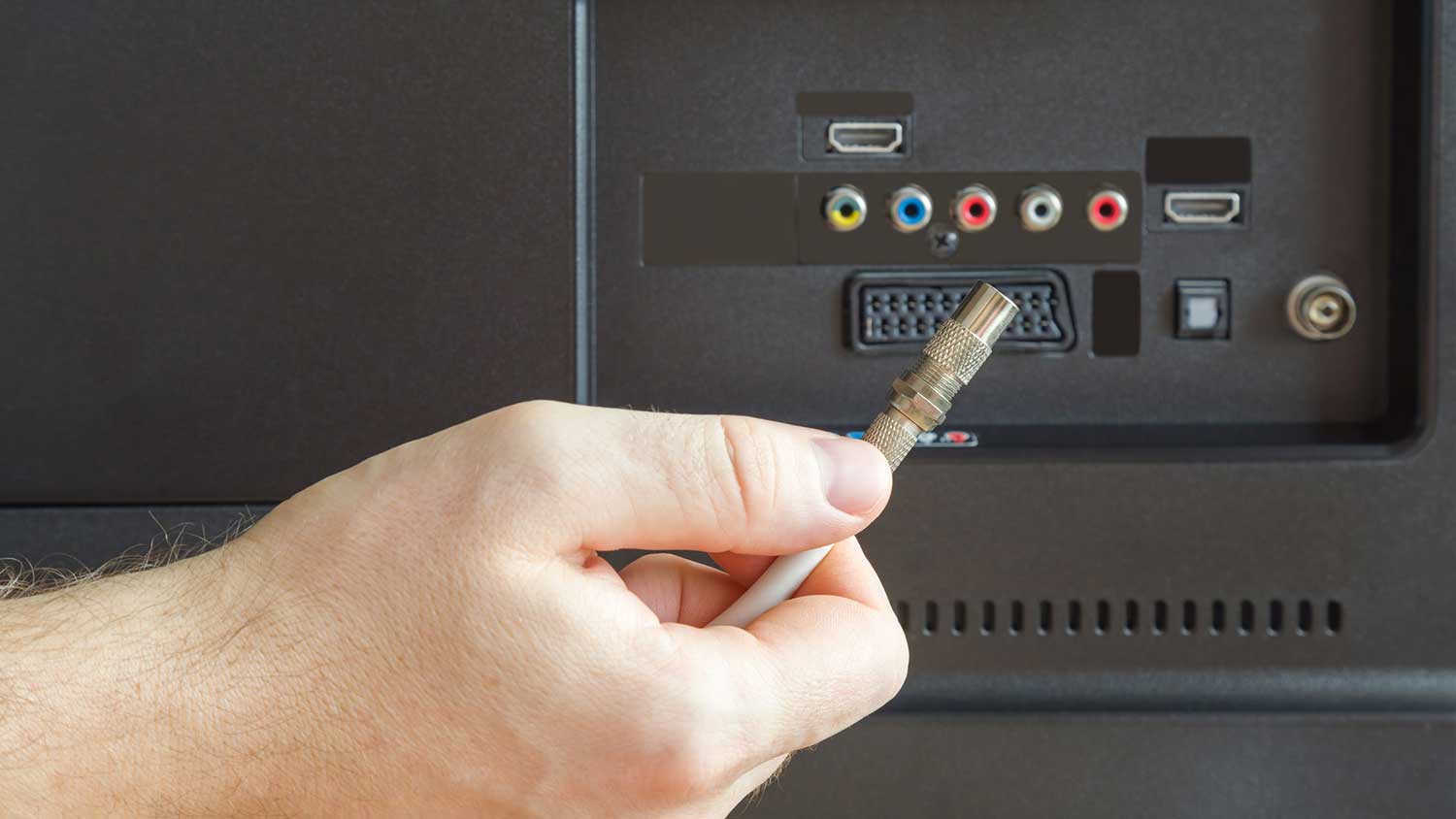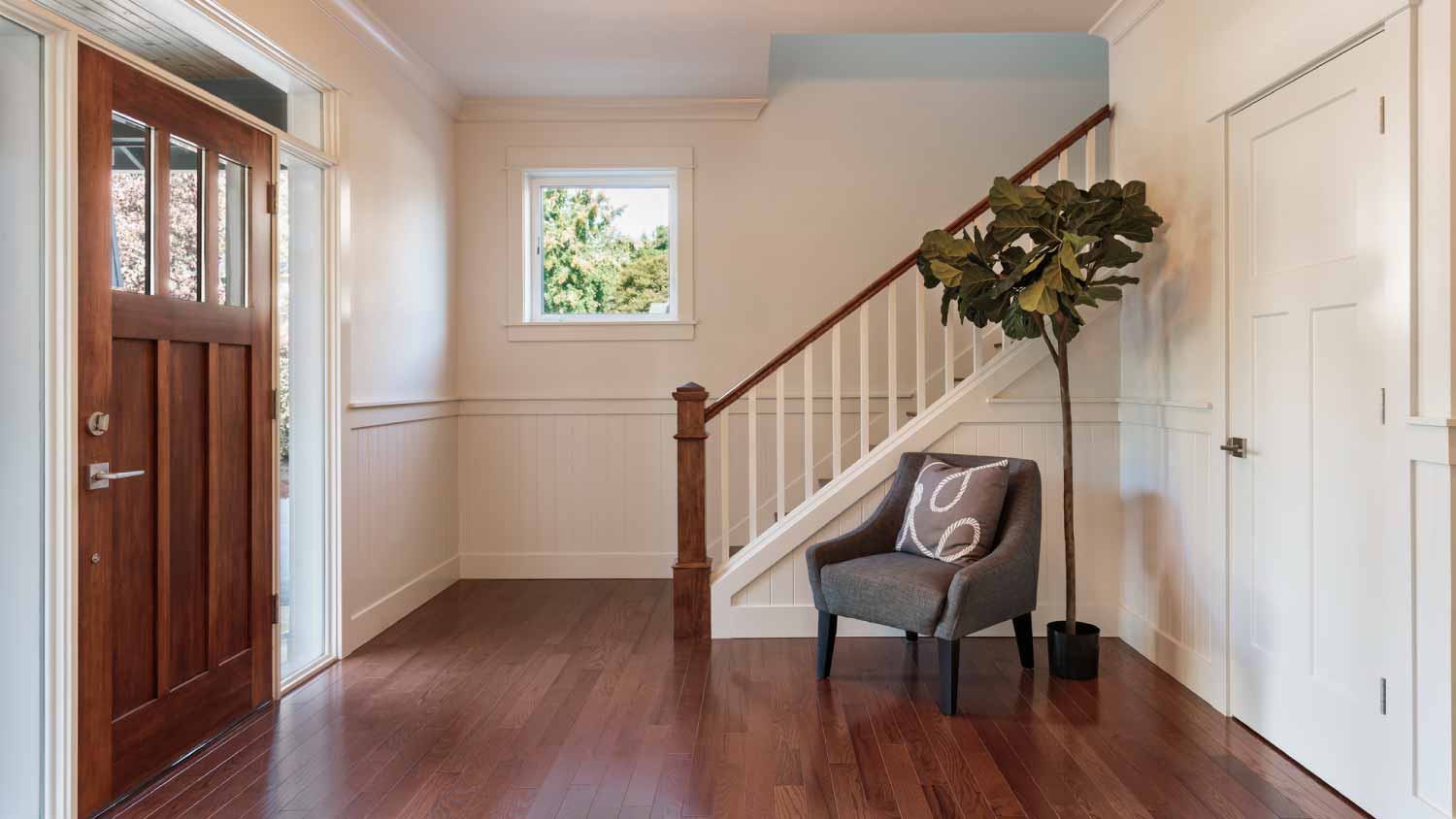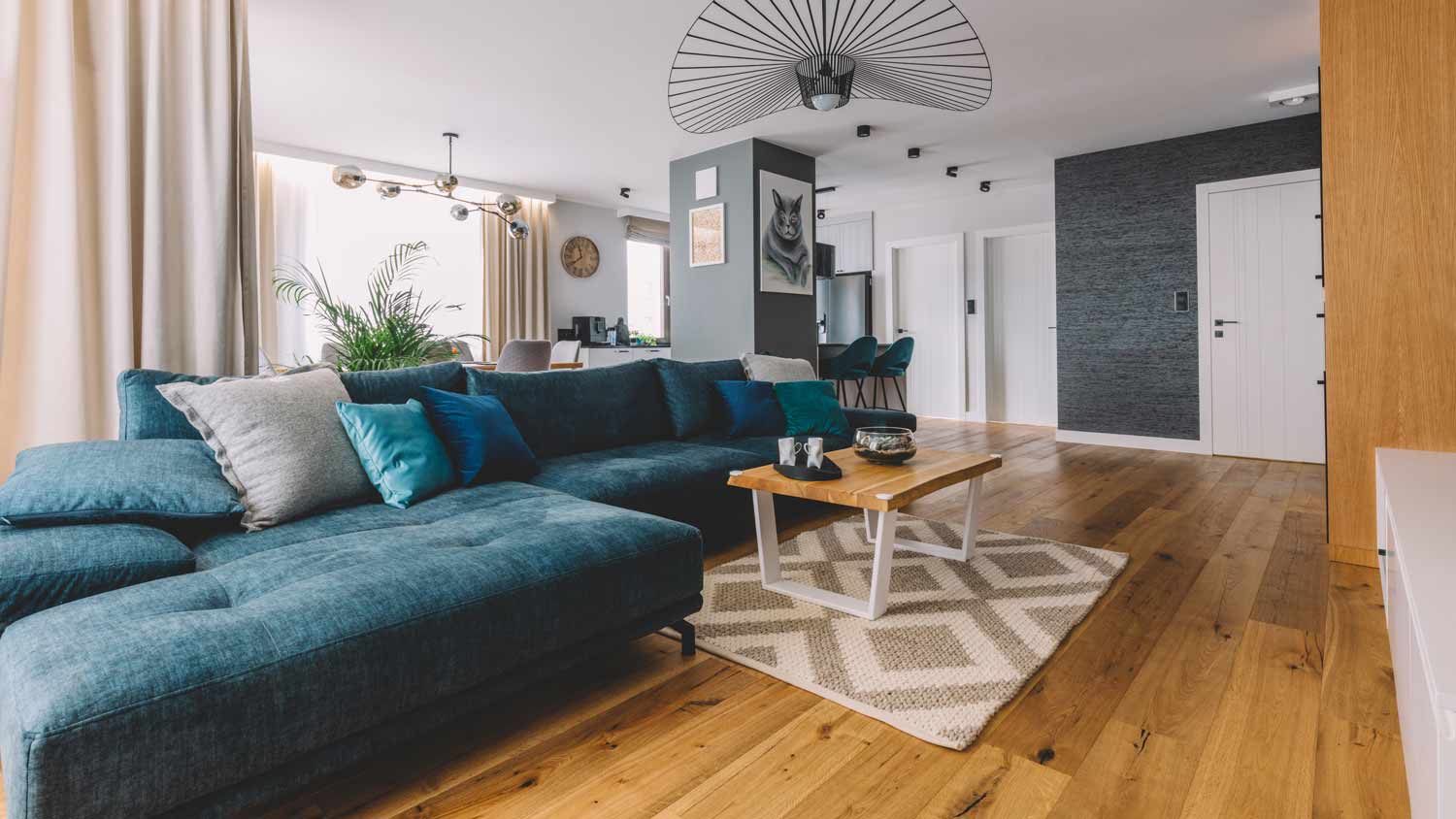How to Install a TV Antenna
Installing a TV antenna is the key tosaving money while enjoying a solid selection of channels


Did you know that you can watch free TV? It’s as simple as learning how to install a TV antenna.
Adding an outdoor TV antenna will allow you free access to local and national channels like ABC, CBS, FOX, and NBC. This installation is a great option for people who don’t want the channels that come with expensive cable packages. To get started, read on to find out how to install a TV antenna.
Why Should I Install a TV Antenna?
Installing a TV antenna is optional—you might already be happy with your current cable or satellite options. However, if you’re interested in saving a few bucks (or quite a lot over several years), then installing a TV antenna is an option to consider.
Whether you opt for a quick, easy indoor TV antenna installation or something more complex like an outdoor antenna, it’s a one-time job. Once the antenna is up, you can enjoy free cable channels for years to come.
How Much Does It Cost to Install a TV Antenna?
The cost of purchasing and installing a TV antenna is about $310. A small indoor antenna costs about $220, while a large antenna for an elevated outdoor area could cost as much as $430.
Outdoor antennas can pick up TV broadcasts from 80 to 990 miles away, with most antennas made for the 100- to 150-mile range.
How to Prep For Installing a TV Antenna
You’re probably excited to start your TV antenna installation, but before you do, consider a couple of prep steps.
Indoor vs. Outdoor
The biggest decision you’ll need to make is whether you want an indoor or an outdoor TV antenna. Indoor antennas are easier to install, and if you place them correctly, you can get access to several free channels. It’s best for people who want to DIY the job and want only a few free channels.
However, if you want the most number of channels possible with the highest picture quality, you might want to choose an outdoor TV antenna. In some cases, you might even be able to double the number of channels by installing an outdoor antenna.
Keep in mind that outdoor antennas are more labor-intensive to install, and depending on the size of the antenna and mount type, you may need to hire a local pro TV antenna installer. If you live in a rural area, outdoor TV antennas may be your only option.
Antenna Range
When buying an indoor or outdoor antenna, pay attention to the number of miles the antenna is designed for. You need to ensure that it has enough power to pick up stations from your nearby TV broadcasters. You can look online for websites that map TV broadcasters in your area based on your address or zip code.
Most indoor antennas can pick up TV broadcasts between 50 to 300 miles away, although the results vary depending on the terrain around your home.
How To Install an Indoor TV Antenna

Follow these steps to install your indoor TV antenna in a snap.
1. Decide Where to Install the Indoor TV Antenna
The best spot to install your indoor TV antenna depends on the location of your local TV broadcasters. You should place the antenna in the general direction of the local broadcast stations for the best results. Changing where you place your antenna greatly impacts the picture quality and number of channels available.
For indoor antennas, the installation is simpler because the antennas are usually vertically mounted to the walls or windows with adhesive. Note that some antenna brands have smartphone apps that you can download to figure out the best spot for the antenna installation.
2. Plug In the Coax Cables
Indoor antenna installation is fairly straightforward, but steps vary depending on the make and model. First, plug in the coax cable to the antenna. Then, plug in the other side of the coax cable into the TV where it says “ant in.”
If your antenna comes with an amplifier, plug it in between the antenna and the TV with coax cables. If you have an analog TV rather than a digital one, you’ll need to use a converter box to get your antenna to work.
3. Scan For Channels
The final step in installing your indoor TV antenna is scanning for channels. Follow the manufacturer’s directions for best results. Typically, you need to ensure the source input is the coax cable. The input may be called coax, TV, or cable.
Next, hit the settings button on your remote and look for the antenna menu. It might be called tuner or it could be a picture of a satellite. Set it to “air” or “over-the-air.” In the same menu, click on the “auto program,” and the TV will scan for the available channels.
How to Install an Outdoor TV Antenna
Outdoor antenna installation is much more labor-intensive than indoor TV antenna installation. Unless you have experience working on roofs, hire a pro to avoid the risk of serious injury.
1. Choose the Antenna’s Location
Your antenna’s location will determine how many channels you can get, so it’s an important step. The higher the antenna placement, the better the reception. You should put it at least 10 to 20 feet off the ground.
In addition to the height, you need to also point the antenna toward your local broadcasters.
Avoid placing the antenna near obstructions, like trees and utility lines.
2. Pick a Mount Type
To determine where to install the TV antenna, you need to consider what type of mount you want to use.
Small J pole: This mount fits on the trim of your roof, and it’s best for 1- to 2-foot antennas.
Large J pole: A larger version of the small J pole that holds bigger antennas.
Wall mount: This mount type is best for placing antennas on the side of your house, and it comes with brackets to hold the pole.
Chimney mount: A chimney mount wraps around the chimney, and it doesn’t require drilling into the home. You should not use these mounts on active chimneys.
Eave mount: You install this mount on the peak of your roof, offering lots of height.
Tower: This mount holds the largest antenna option, and it’s good for very rural areas, but it must be installed professionally.
3. Assemble the TV Antenna
You’ll need to assemble the outdoor TV antennas before installing it. If you’re hiring a pro to install your antenna, put it together before they arrive to reduce installation costs.
Most outdoor TV antennas require many supplies to assemble, including a screwdriver, sealant, level, power drill, roofing screws, and more. You’ll also need to use a compass to determine the direction of the broadcast towers. Follow the assembly instructions in your user’s manual for best results.
4. Install the Mount and TV Antenna
Now, onto the tricky part of this project. Keep in mind that the installation process varies depending on which mount type you choose.
For J-poles and wall mounts, you need to place the unit against the house where you want to install it, and mark the pilot holes. Use a level to make sure the pole is positioned correctly. Then, use a drill to make the pilot holes, and then screw in the lag bolts. Once it’s secure, attach the TV antenna to the mount with lag bolts.
Installing any other type of mount is best left to a pro. Chimney and eave mounts require you to work on your roof, which can be extremely dangerous. Also, towers should only be installed by professionals.
5. Connect the Coax Cables

This part of the installation process is easier if your house already has hardwired coax cable, which is usually the case if you previously had cable or satellite services. In this case, find out where the coax cable enters the home because this is where you’ll hook up your antenna.
If you don’t have coax cables hardwired into your home with coax outlets installed, you’ll need to run the coax cable from the outdoor antenna into your house. To avoid serious injury or worse, it’s essential to turn off all power at your main circuit box before you start working with wiring. Before you start drilling holes, especially in walls, you need to ensure that the wall is free of electrical wiring. If you’re not sure or don’t have electrical experience, leave this step up to the pros.
Many people choose to feed the cable from the roof, through the attic wall, and then down into the desired room. When feeding the cable from your attic, you can use a snake or fish tape. You can simply feed the cable through the wall or install a coax outlet for a more finished look.
You may also be able to install the cable through your air ducts. This option can be tricky because you need to drop the coax cable into an air duct, fish for the coax cable, and drill a hole in the air duct. Another easy solution is using a window pass-through jumper cable if you don’t want to drill any holes. The adapter allows you to connect the cables with your window mostly shut, which can work if you don’t have extreme weather that requires perfect sealing during the cold and hot months.
6. Plug In the “Ant In”
Once your coax cable is in the room with the TV, all you need to do is to plug it into the “ant in” area of your TV. If you don’t want any visible cables, you should consider installing a coaxial cable outlet which costs $210 on average.
Some outdoor antennas come with a power adapter and remote, which can be very handy for picking up the maximum number of channels. It’s a useful feature that allows you to control the direction of your antenna without climbing onto your roof.
If you want to set up multiple TVs in your house with free cable and your home is not yet hardwired with coax cables, then you can use a splitter. Not only can you get free channels on your TVs in your house—you can use it for outdoor TV installation, too.
7. Scan for Channels

Once everything is plugged in, you may be able to pick up channels on your TV right away. But to make sure you're getting the most out of the set-up, you need to scan for channels.
On your TV menu, navigate to the antenna menu, click on "auto program," and wait a few minutes until the antenna finishes scanning for all of the available channels. Then, you should be able to browse through your new-and-improved channel options.
DIY Installing a TV Antenna vs. Hiring a Pro
DIY installing an indoor TV antenna is possible for DIYers of any level. It shouldn’t take very long, and the manufacturer’s instructions are fairly easy to follow.
However, if you want to install an outdoor TV antenna, you’ll most likely need to hire a TV antenna installer near you. Depending on the mounting hardware and antenna, the installation may require potentially dangerous access to roofs and roof lines. Unless you have extensive experience working on the roof safely, don’t try to DIY the job.
Frequently Asked Questions
The best spot for your indoor antenna is as high up as possible and facing your nearest TV broadcaster. If you have a second floor, or if you have an attic area, you might get the best reception by putting your antenna there. Keep trying different spots around your home if the reception seems spotty or if the image resolution isn’t very good.
There are many things you can try to get a better signal. You can try moving your indoor antenna around, upgrading to an outdoor antenna, or installing an amplifier. Also, it might help if you upgrade your coaxial cables or cable splitter. It's also possible to get a second antenna to boost your signal.
Yes, in general, raising your TV antenna will improve your reception. Besides raising the location of your antenna, you should try putting it by a window. In fact, you can have the same antenna but get double the channels or more if it's in the best location. The highest spot to put a TV antenna will be on your roof, and the tallest type of outdoor antenna is a tower.

.jpg?impolicy=leadImage)













